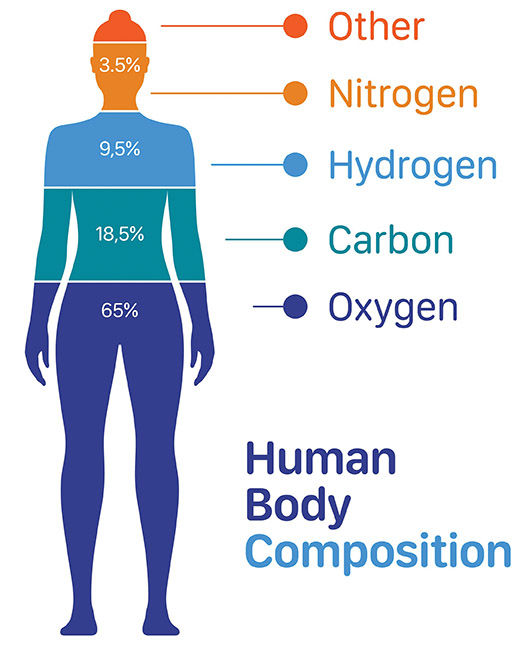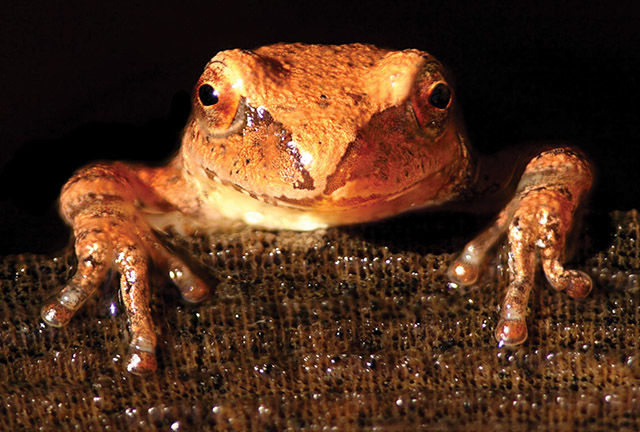School of Science faculty members answer burning science questions.
Who would win a fight between a grizzly bear and a silverback gorilla?
My money would be on the grizzly bear. Although gorillas are quite formidable with their opposable thumbs, strong bite force, capacity for tool use, and strength relative to their size, grizzly bears are better suited to taking down large prey. They are equipped with large claws, powerful forelimbs, surprising speed (running up to 35 m.p.h. over short distances), and an impressive bite force, which makes them excellent predators when the situation calls for it. Therefore, if a grizzly bear and a silverback gorilla were ever to meet and have a beef, my bet would be on the grizzly bear coming out on top, although it may sustain a few bumps and bruises from the battle. All I know for sure, however, is that if I were ever to encounter either in the wild, I will be heading in the opposite direction as quickly as possible to find a new pair of pants.
— Dr. Samuel Nutile, Assistant Professor of Biology
What is the most common element in the human body?
The short answer is oxygen. This is not due to the oxygen we breathe but because we are made up of 55 to 60 percent water, and this results in oxygen being the largest element in the human body at 65 percent by mass. The other three most abundant elements in the human body are carbon at less than 19 percent, hydrogen at less than 10 percent, and nitrogen at less than 4 percent. The human body also contains calcium and phosphorous at around 1 percent each and then sulfur, sodium, chlorine, magnesium, and several other elements at values less than 1 percent.
— Dr. Jay Amicangelo, Professor of Chemistry
What purpose do mosquitoes have in the world?
This is a good question but let’s be honest: We share a biased perspective on these blood-sucking critters. And by “we,” I mean virtually ALL animals with a functioning circulatory system.
From an ecological standpoint, mosquitoes play several important roles within the food chain. Like many other insects, mosquitoes have a complex life cycle that involves complete metamorphosis. Mosquitoes begin their lives as aquatic larvae, which develop underwater for approximately two weeks before emerging as flying adults. An adult female can lay hundreds of eggs in her lifetime, which means that mosquito larvae can reach high densities, especially in shallow waterbodies. Mosquito eggs that fail to hatch during the summer can overwinter until the following spring when rain returns; consequently, mosquito larvae are often the first abundant food source available for other animals during this period of scarcity. Additionally, adult male mosquitoes feed strictly on the nectar of plants and thus share the same purpose as other pollinators.
Just as beauty is in the eye of the beholder, “purpose” is a matter of perspective. Try to keep an open mind when considering these less-than-charming organisms!
— Dr. Adam Simpson, Assistant Teaching Professor of Biology
What is the most endangered animal on earth right now?
This is a complicated question. Determining if a species is truly extinct is challenging, as death is rarely observed in nature, and dead bodies often do not last long because of decay or consumption. Moreover, many animals are elusive. There could be fewer than ten individuals of a particular species left in the wild, and we may never definitively find evidence that they are present. Recent controversies over the ivory-billed woodpecker and Tasmanian tiger exemplify this challenge.
To build on that, certain species are considered “extinct in the wild.” That is, they no longer exist as self-sustaining populations in their native habitat and are only propagated in captivity. These species are no longer able to fill the role they once played in their environment, even though they may have a moderate population size.
So, while there are many species that we don’t have population size estimates for, one species with a particularly small population size is the Javan rhinoceros. There are fewer than eighteen of these animals remaining. Javan rhinos are considered “critically endangered.”
For more on which species are “extinct in the wild,” “critically endangered,” or “data deficient,” see the “red list” kept by the International Union for the Conservation of Nature at iucnredlist.org.
— Dr. Lynne Beaty, Assistant Professor of Biology
Who invented Algebra and why?
Algebra was born of the need to solve problems and perform calculations even in everyday life. So, as many human endeavors that go through several iterations and growth, the field of science that we know as “algebra” does not have an inventor. But the origin of this word is well-known. The Persian mathematician Mohammed ibn Musa al-Khwarizmi wrote the treaty “al-Kitāb al-mukhtasar fīhisāb al-jabr wal-muqābala” (The Compendious Book on Calculation by Completion and Balancing, in Arabic). When his work was studied in Europe, the expression “al-jabr” (balancing or restoring) became “algebra.” Also, as scholars kept repeating (in Latin) “and so said al-Khwarizmi” to justify the procedures they used, the word “algorithm” was born.
— Dr. Antonella Cupillari, Associate Professor Emerita of Mathematics
How do amphibians know it’s time to breed when the weather is so unpredictable?
Amphibian species vary in the exact cues that initiate their spring migration, but most rely on a combination of precipitation and rising average temperatures. Some amphibians, however, have a certain temperature threshold that needs to be hit for them to move or will move primarily during certain phases of the moon.
— Dr. Lynne Beaty, Assistant Professor of Biology
Can you light a diamond on fire?
Absolutely. A 2009 article by Theodore Gray that appeared in Popular Science says it best. “It is bond strength, not hardness, that determines how easily oxygen can attack and burn a material.” Diamonds are carbon in a unique geometric structure, but the chemical composition is the same as graphite found in a common pencil. No one wants a fake diamond for their engagement ring, but it would withstand the heat. Diamonds, man-made or naturally occurring, are made of carbon (C) with minor impurities that add to the color quality. Cubic zirconia (CZ) are made of pure zirconium dioxide (ZrO2). Gray says “If your house burns down with the family jewels inside, you can collect the pools of melted gold, but the diamonds will be gone in a puff of CO2. Cheaper, more attractive stones, such as cubic zirconia and synthetic ruby and sapphire, are made of refractory metal oxides that easily withstand the same heat. So, it’s actually mall trinkets, not diamonds, that are forever.”
— Tracy Halmi, Associate Teaching Professor of Chemistry


